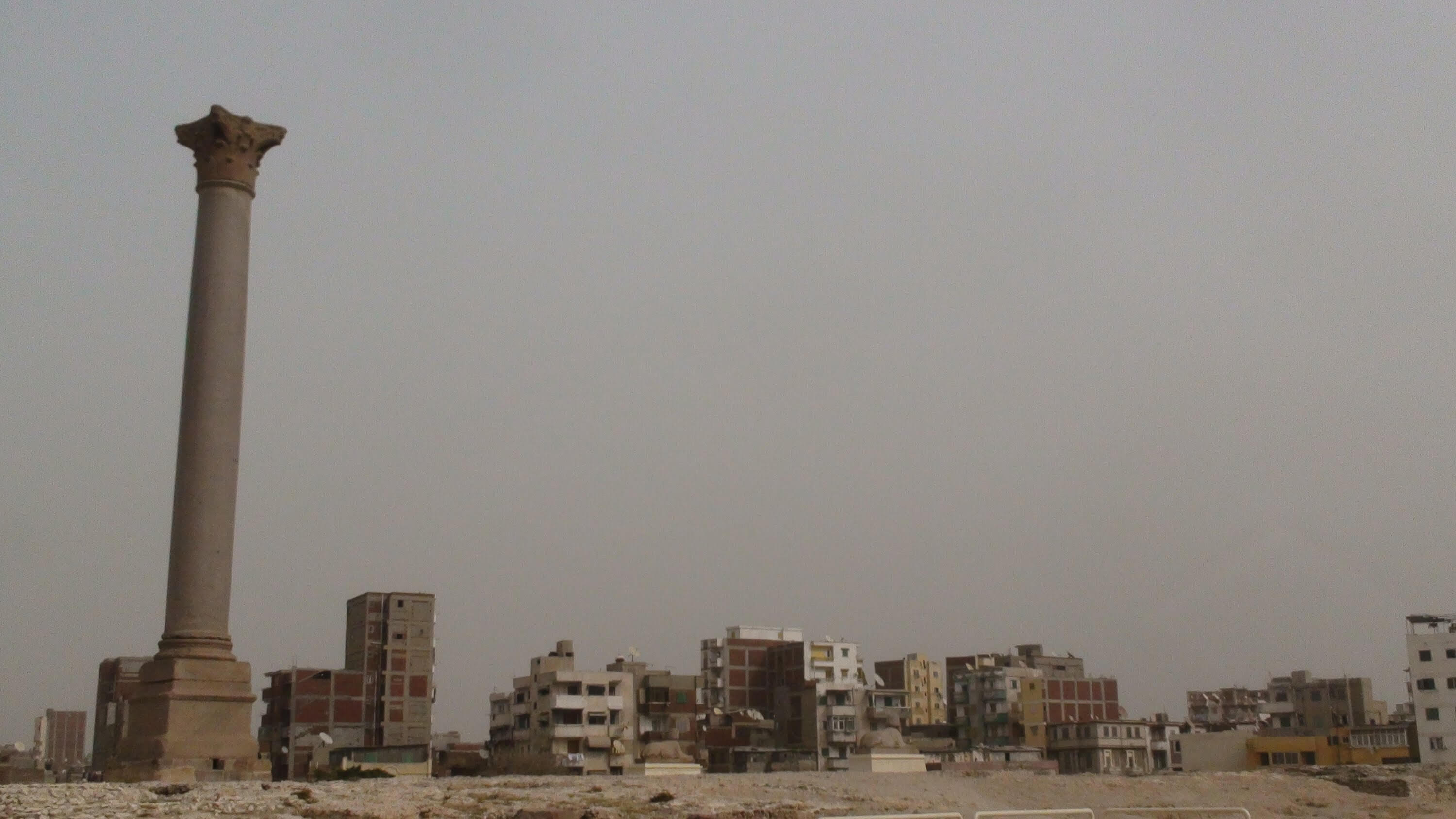Pompey’s Pillar
Pompey’s Pillar is a Roman triumphal column in Alexandria, Egypt, and the largest of its type constructed outside the imperial capitals of Rome and Constantinople.
Pompey’s Pillar remains its primary landmark at an impressive height of approximately 27 meters. It is made of red granite, quarried and transported from Aswan in Upper Egypt, and is flanked by two sphinx statues.
Pompey’s pillar stands in the center of the temple hall of the Serapeum, the principal temple of the Greco-Egyptian god Serapis, personified by the sacred Apis bull. The foundations of this temple survive, along with bilingual texts, dating construction of the temple to Ptolemy III Euergetes. A renovation was performed on the temple in approximately 200 AD, remains of which are still standing. The Serapeum also housed an underground library, contemporary to the ancient library of Alexandria. This crypt-like structure, approximately 75 meters in length, running beneath the grounds of Pompey’s pillar, is still well-preserved, with niches in the walls once reserved for papyri scrolls. The library is accessed from a staircase leading from the top of the hill to the lower-level ground.
The site of the Alexandria Acropolis also features a “Nilometer.” By means of the Shidia canal, which connected the Nile River to Lake Mariut, the Nilometer was used for measuring the height of the Nile during each flooding season.





